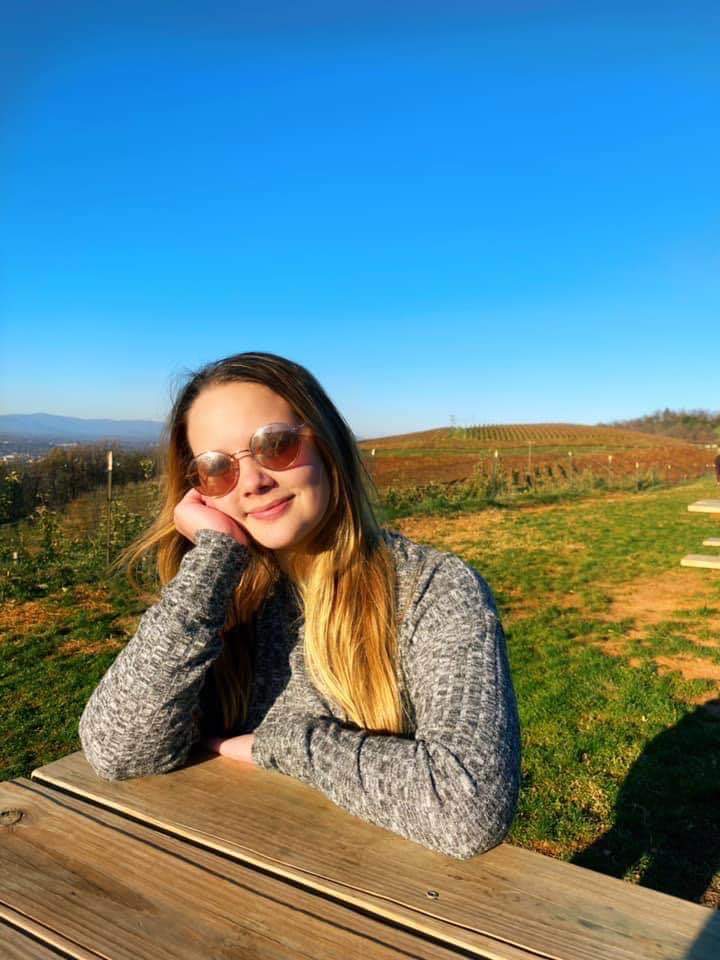When my son was diagnosed with dyslexia five years ago, I read everything I could about the learning difference — the struggles and complications, but also aptitudes and strengths. As an architect, I was compelled to explore the impact of planning and design on the equity and success of all learners inside and outside of the classroom. As an adjunct professor in the School of the Arts at Virginia Commonwealth University (VCU), I grew more aware of the students in my classroom and their backgrounds, differences, and perspectives. I started really talking to my students: I engaged them in uncomfortable conversations and sought their feedback on my professional projects. I learned from them, and those lessons fed my desire to dig deeper, research more, and make a difference.
Author and disability advocate, Rebekah Taussig, describes in her book, Sitting Pretty, the freedom she felt as a child before realizing the world was not designed for people like her, disabled and marginalized populations. She talks about a world “that sees humans on the margins and says, ‘You have what we want! What barriers can we remove so we can have you around? What do you need? How can we make that happen?’” (Taussig 16).Increasingly, students seeking higher education are non-traditional; they come from societal margins: minorities, working adults, immigrants, first-generation students, part-time students, and students with physical, social, and emotional learning differences. How accessible do Virginia’s physical campuses feel to these students? What values can we, as architects, instill in our designs to contribute to a more welcoming, inclusive, and thriving place for students to learn? I spent the last few weeks talking with students that attend institutions of higher education here in Virginia. I ask them where they felt most welcome while on campus, and what environments left them feeling marginalized. The theme of “choice and voice” resonated throughout my student interviews. Here is what they want architects to keep in mind when designing inclusive spaces for learning and connection.
Formal Learning Environments
When it came to scheduled courses, students overwhelmingly preferred seminar-style and active classrooms — spaces where students can bring their own technology, spread out, move around, and collaborate with other classmates. “I love to sit at a table where it’s group-oriented and easy to work with others,” Brandi Condrey, a Junior, first-generation transfer student at VCU, told me. “I had a small class where there were just six of us, and we sat around a conference table with the professor. It is so much easier to connect with your professor when you are sitting at the same table and at the same level as them.”
Will Walker, a Senior Leadership Studies major at the University of Richmond (UR), a first-generation Black student from a socioeconomically disadvantaged area of Winnfield, Louisiana, agrees. “I don’t like spaces where you are not able to look people in their face. You don’t know who is in the class, and you cannot really hear what is being said.” He appreciates spaces with bold colors, whiteboards, and the ability to project anywhere in the room.
Abra Granger, a UR student-athlete and member of the Diversity, Equity, and Inclusion Council, remarked, “The breakdown of structure is helpful in the classroom. I learn best when people can be closer together and you can create a more homey environment, a more collaborative environment.”
One particular building that proves successful is the Academic Learning Commons at VCU, designed by KSS Architects with BCWH as architect-of-record. Catherine Guarino, who graduated from VCU with an Interdisciplinary Studies degree this past winter, mentioned a preference for smaller classrooms where students could move the furniture around. “Doing group activities made it feel like everyone was on the same page,” Guarino shared, “I did not feel seen or connected in larger lecture halls. It was distracting to be right next to someone.” She complemented the modern, spacious classrooms at the Academic Learning Commons as a place where “you could work on things with other people without feeling like you were in their space.”
Walker appreciates an environment where he has choices to make, “Give students the weird chairs to sit in in class,” he continued, “Sometimes I want to stand, sometimes I want to sit.” Giving students the option to sit, stand, or lean in instructional space accommodates different postures and mobilities without stigmatizing users.
Informal Learning Environments
Informal learning environments are the serendipitous spaces on campus that weave instructional environments together. Students reported feeling most comfortable in buildings that present levels of privacy to accommodate different size groups. Design features that students looked for include private study rooms, semi-private study areas, comfortable furniture, whiteboards, monitors, and access to natural light and people-watching. When she needs to complete work, Guarino heads to the recently renovated study spaces at VCU’s Cabell Library, where you have a choice to study alone or with others. “I loved the study rooms to work with other people.”
On the other hand, Condrey has only been to the library twice; she found the openness and people distracting. “I personally prefer to study in a place where I can be by myself.” She prefers to study in Oliver Hall, where her major is housed, and sometimes studies outside at the picnic tables.
Caroline Tinsley, who attended University of Mary Washington her freshman year, found comfort at “The Link,” a newly renovated connector between Mason and Randolph Halls, two of Mary Washington’s residence halls. “It has good light and big windows; you could people watch if you wanted to.”
Jordan Nguyen, a sophomore at Longwood University, heads to Greenwood Library with her roommates to study. “We would sit in the same area but do our own thing,” she said — a concept architects often refer to as “study amidst.” “I felt very comforted but also very motivated by seeing my friends do their work.” Nguyen’s furniture preference of choice is soft seating; she says she and her friends always try to find open couches for their time at the library.
Makayla Callender, a Junior Chemistry major at UR, likes studying close to her professor’s faculty offices inside the Gottwald Science Center. “I like working in the pod outside of the professor’s offices — the ‘outside by the professor’ feeling. It makes me comfortable to know that they are around and I can ask them a question if I need to.” The atrium and reading rooms at Gottwald, designed by national science and technology experts, EYP, provide faculty and students “sticky” spaces to study and interact, creating an experience of any time/anywhere/anyplace learning that builds a sense of belonging and helps students connect with the discipline.
Faculty Connections
Students mentioned that strong bonds with their instructors fostered belonging and success on campus. These relationships can be fostered through intentionally designing space outside of classrooms and laboratories for students to sit down with an instructor before or after class and ask a question or finish a conversation. Condrey said she preferred to talk with her professors before or after class and did not utilize faculty office hours. Oliver Hall, the academic building that houses the School of Education where Condrey takes most of her classes, is a traditional academic building with classrooms and offices opening onto a double-loaded corridor, leaving little room for such moments.
Over at Longwood, Nguyen has visited several professors during her time on-campus but always schedules appointments first, “I was so nervous first walking into a professor’s office.” She mentioned that offices were often hard to find, especially in Longwood’s Rotunda Building, which has a split-numbering system for its two wings. Tinsley, who negotiated a transfer from Mary Washington to VCU between her freshman and sophomore years, agreed that it is intimidating to visit faculty and staff in office settings, but mentioned that furniture in the offices for guests made her feel welcome. For instance, when she went to talk to an advisor at Mary Washington, the advisor had a couch she could sit on, which helped relax her and ease the conversation.
Emma Johnson, who is studying Healthcare and Russian at UR, enjoys visiting professors in their office because it humanizes them. “I like that my professor’s offices are decorated, it feels like I get a personal glimpse of them, and I am having a personal conversation.” According to the Chronicle of Higher Education, however, some students think “office hours” means the time during which the professor shouldn’t be disturbed. “Cultural gaps like that don’t just make first-generation students feel like outsiders — they get in the way of their success.” (Chronicle, Feb 2019) Many faculty members have pivoted to online office hours. Some institutions are rebranding times to meet with students as “Student Hours,” providing a neutral but private location where faculty can meet with one or several students at a time. Words matter; and a simple name change can break down barriers, reframe the experience, clarify access to professors, and shrink the equity gap for first-generation students.
Holistic Campus Experiences
Walker came to UR via the Leadership Enterprise for a Diverse America, a non-profit organization committed to helping high-achieving students from under-resourced backgrounds gain admission to our nation’s most selective colleges and supporting their success at these institutions. Walker admits to having trouble struggling with finding a sense of belonging at UR. Now a Senior, Walker has learned that there are spaces on campus that foster success and others that still feel inaccessible. He feels most comfortable outside: in the Memorial Garden, on the patio outside Jepson Hall, or along the circle outside of Woods Hall. Several students mentioned the amount and quality of space dedicated to different disciplines gives a perception of who belongs and what students the institutions place a higher value on. “There is an intersection between a sense of belonging, campus layout, and places and spaces and even counter spaces,” Granger told me. She references Career Services at UR as an example, housed at Tyler Haynes Commons but has an additional office in the Robins Business School. “It is more perception, but it feels like we are placing more emphasis on business students than everyone else.” Granger also observed how creating universal spaces for students with all abilities makes the campus more accessible for everyone. “Even in the short-term from injuries that happen in the athletic department where you are rolling around on a scooter or on crutches. That temporary disability that we don’t account for on campus, you notice really quickly how hard it is to get around, to get doors open. I know from personal experience how difficult that can be.”
UR and VCU are working on accessibility audits, all-gender restrooms, and additional lactation rooms. Many institutions have recently added Welcome Centers for one-stop student services and support, Multicultural Centers, and affinity spaces to create spaces for togetherness, and Wellness Centers that prioritize both mental and physical health. Campuses are auditing building names and artwork — working to tell the authentic story of the grounds where their buildings sit and the people who built them. They are also considering topography, alternative transportation, and building access with an eye towards universal access to all spaces.
Turning back to Sitting Pretty, Rebekah tells us, “Access is a way of life, a relationship between you and the world around you; it’s a posture, a belief about your role in the community, a value of your presence” (Taussig 213). Well-being matters. A sense of belonging positively influences academic achievement, retention, and persistence. Creating places on campus that reaffirm to students that they belong is vital. Choice and voice are vital. Many marginalized student populations simply don’t see themselves as higher education material. As architects, we can change that narrative. Through considerate planning and design, we can tell students, “Yes. This is your story. Now is your time. You belong.”
Works Cited
Quintana, Chris. “Can This Man Change How Elite Colleges Treat Low-Income Students?”, Chronicle of Higher Education. February 15, 2019.
Taussig, Rebekah. Sitting Pretty: The View From My Ordinary Resilient Disabled Body. New York, NY. HarperOne, 2020.
About the Author
Shannon Dowling, AIA, LEED AP, is a Learning Environments Specialist at Ayers Saint Gross and a 2020-21 SCUP Fellow. She is working with Virginia Union, Virginia Commonwealth University, and the University of Richmond to research ways diversity, inclusion, and equity can take a physical shape on campus.





